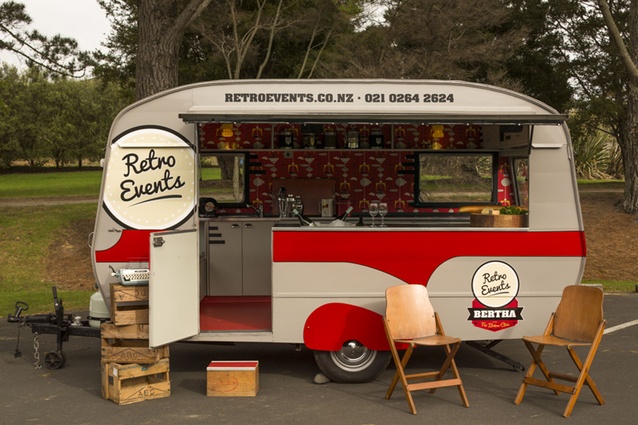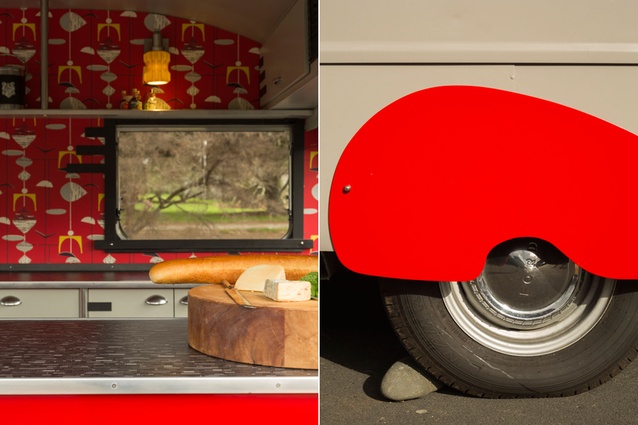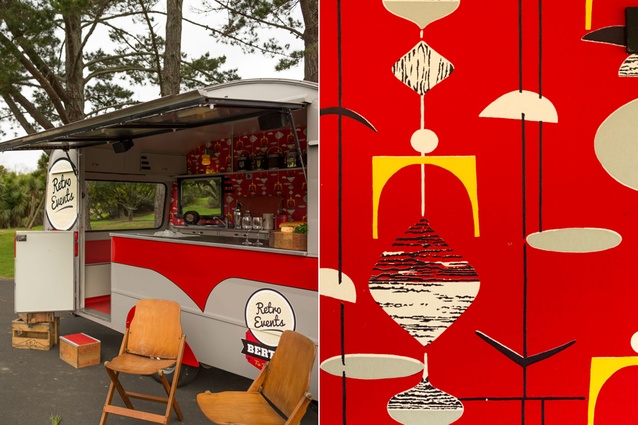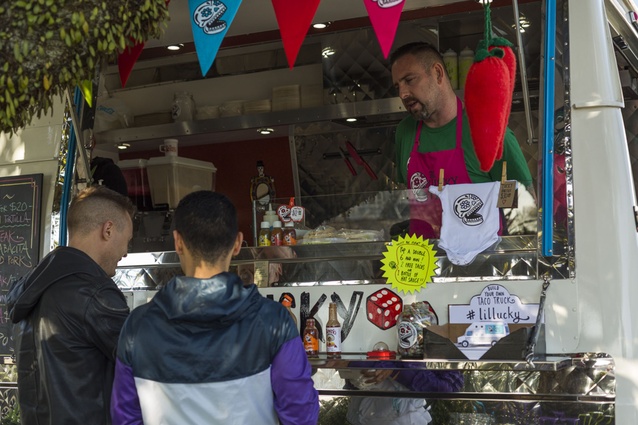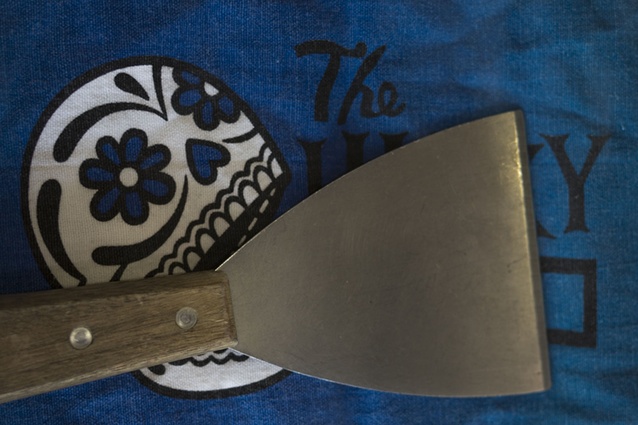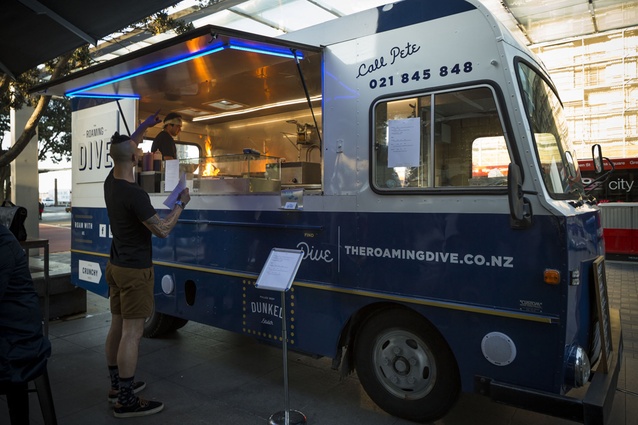Food trucks: movable feasts
Think food trucks are a relatively new phenomenom in New Zealand? Then you can’t have heard of The White Lady opera which pays homage to Auckland’s oldest surviving food cart.
In its second season (at the time of printing) at The University of Waikato, the opera attempts to capture the colour of the cart’s Fort Street location, following the love story of two central characters who frequent the wagon.
In its 66th year and third generation of Washer family management, The White Lady sports no pretensions in menu, nor in aesthetic, but this much-fêted icon of Kiwi culinary history (the menu features generously portioned burgers made from fresh ingredients) has new friends in town who are contesting the notion that food trucks are little more than restaurants with training wheels.
Peter Washer, second-generation owner of The White Lady, has fond memories of his father’s first milkshake cart, which operated at Auckland’s Ellerslie Racecourse and recounts: “the old man always said your town was judged by its pie cart”.
But the new kids on the block, who have rejected archetypal on-the-go ‘tucker’ and are offering a more-sophisticated, international flavour of food and of interior aesthetic, are taking inspiration from the food-truck scene in America.
In the United States, Roy Choi, a second generation Korean-American, is widely credited with turning the food-truck scene on it’s head eight years ago when he opened a little taco truck called Kogi BBQ in Los Angeles, peddling two-dollar Korean barbecue tacos.
He subverted the notion of unsophisticated roadside snack bars, offering an exciting fusion of cultural flavours at penny-pinching prices, setting Angelenos’ mouths watering and earning him the title ‘Godfather of food trucks’.
The Los Angeles local is part of an ever-evolving history of mobile food vendors, which began with the ‘chuckwagon’ created in 1866 by Charles Goodnight
Goodnight’s invention was used to feed herdsmen on long cross-country cattle drives and soon was followed by night lunch wagons serving construction workers in New York in the 1890s and mobile canteens in the late 1950s. The appearance of the slang term ‘roach coach’ served to define the cheap and grubby reputation of these mobile food vendors.

But now with more than three million food trucks and five million food carts in the US, the competition between mobile vendors serving cut-price gastronomic experiences has reached fever pitch.
Food-wagon design has followed suit with slick fit-outs and cutting-edge commercial interior design now de rigueur.
And, with the trend reaching across the globe, New Zealand aficionados of food and design have caught on.
Locally, coach-builders and custom-vehicle and food-trailer fabricators are negotiating the design challenges of these small and unconventional spaces with storage for gas tanks, power supply and water balanced against cooking and serving utilities.
Yet the earliest mobile street vendors in New Zealand, pie carts, were of much humbler configuration and were found in any town of substantial population, from the depression era in the 1930s. These usually shabby caravans still hold a special place in the social mythology of many towns but it is their newer, design-savvy cousins who are now impressing the locals.
With the popularity of mobile food vehicles set to increase, some councils are placing restrictions on a mobile food vendor’s time spent in one location, to protect local business interests; when the time is up, the vendor must roll on to another spot.
Washer likes to compare the food cart to “a stage-show towing-on to a site in the mid-city, then clearing off like we were never there”. So, very much like The White Lady opera, food carts across New Zealand must close their designer curtains and shut up shop, ready for the next gastronomic performance
The Lucky Taco
When, during a hail storm in Ponsonby, Auckland, your patrons shelter inside the nearby fried-chicken take-out house, waiting for their authentic Mexican tacos to be made, you know that your offering
is simply not in the same category as is a certain other kind of fast food.
Proving that today’s food truck is more than a restaurant on training wheels, Sarah and Otis Frizzell have taken the best in Mexican style and flavours and created a bright little truck named The Lucky Taco.

A sojourn in Los Angeles and Mexico in 2012 was the perfect research trip for the Frizzells, whose love of Mexican cuisine had prompted Sarah to quit her job in advertising to pursue her dream of serving authentic tacos. Sarah describes what she saw overseas as “glittering gourmet eateries on wheels” and returned to New Zealand inspired.
With Otis on board, the couple purchased a 1991 Leyland Daf; while it was mechanically reliable, the interior needed a complete overhaul.
The curved shape of the vehicle meant a bespoke solution was required for the fit-out and Custom Coachbuilding’s Bruce Greenidge was engaged.
“He was a real genius,” Sarah said, adding that her favourite element in the space, the innovatively recessed microwave, was one of Greenidge’s customised solutions.
The couple, who pre-cook the different food elements in a separate commercial kitchen, has juxtaposed slick stainless-steel finishes and stud detailing against blue-and-red linoleum walls and floor. The kitsch home-made and gifted accessories interrupt the sleek space, creating an artisanal element, as well as bringing a bit of lucky charm to the eatery.
The Roaming Dive
A university semester abroad in San Diego studying International Business would eventually have the opposite effect from inspiring Peter Stewart into the corporate world. Excited by the exploding food-truck scene in San Diego, California, Stewart became passionate about classic American take-out food. After the completion of his Bachelor’s qualification in New Zealand in 2012, a Ford Trader truck was sourced and, in November last year, The Roaming Dive took to the streets of Auckland.
A ‘dive’ is the name Americans give to grimy local bars and it was this colloquialism that fitted with the subtle American design flavour Stewart sought.
The four-month refurbishment of the truck, previously converted into a living space, began with Stewart mapping out the layout of the kitchen components. But the exact 540mm galley he required for food service made sourcing items like refrigerators and deep-fryers difficult.
“I went into it with sky-high dreams but they weren’t really feasible,” he laughs, admitting the expertise of Real Rides’ Kayton Coughey was much needed.
Coughey, who creates customised vehicle solutions, installed counters, converted windows into panelling, fabricated a service window and decked the utilitarian interior out in stainless steel and aluminium.
Along with this physical transformation from bedsit into functional kitchen, Stewart credits Elmsett Service designer James Tolich with the understated aesthetic, saying “he hit the nail on the head with the subtle American approach”.
And it is this approach that informs the gastronomic experience. On the menu are sliders, chilli dogs and po-boys, along with fries from a hand-cut mechanism, which incidentally, is Stewart’s favourite component in the truck.
Retro Events – Bertha
A love of the aesthetic of the ‘60s and ‘70s is what pre-empted the creation of Bertha, the mobile party caravan created by long-time friends Justine Torrice and Robyn Cunliffe.
The 1974 Sprite, furnished with ‘props’ from the era, was completed in June last year and is one of several themed caravans the duo has rescued and retrofitted into party-going vehicles for their event-hire and styling business Retro Events.
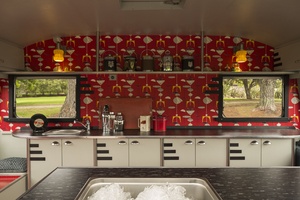
The 13-foot vehicle, discovered in less-than-pristine condition with leaking roof and flimsy exterior, was completely gutted by the pair and retrofitted with plywood walls, benchtops, glass racks, storage cupboards, gas bottle, marine batteries, sinks and water storage.
Robyn’s brother, retired builder David Webster, who undertook the bulk of the renovations over four months, designed and fabricated steel units which house the plastic glass racks, simultaneously adding rigidity to the caravan’s shell.
With the practicalities in place, the two friends chose a bold, ‘70s-inspired wallpaper as the starting point for the interior design and worked backwards from there, settling on ‘endless smoke’ Formica benchtops, embellished with chrome edging.
The look is authenticated with vinyl flooring (called bubblegum dots, by Irvine) and a pair of mustard-coloured glass lamps bookending the shelving on the back wall.
Torrice says they wanted the space to be “bright and robust, and to reflect the ‘60s and ‘70s” and, judging by the success of the renovation, it won’t be long before their next project, a children’s birthday and wedding caravan called Dolly, will join the party.
Food trucks abroad
Below is an interview with Gareth Hughes from the Down Under Bakery, a New Zealand pies truck in New York City.
Interior: Talk us through how the DUB Pies Pie Truck came about?

GH: We’d been selling pies in New York since 2001. Rents here are ridiculously high – making the creation of a sustainable business model at the retail level very challenging. We’d watched the growth in the food-truck craze here in NYC over the last six or seven years and we put together a Kickstarter campaign to raise half of the money to buy and equip a food truck. The campaign was successful and we took the concept mobile in March this year.
Interior: Walk us through the truck’s highlights.
GH: The truck now has a 90-gallon water tank positioned above and directly supplying the La Marzocco espresso machine and drip coffee machine. Beneath the espresso machine (situated in the back of the truck) is a large refrigerator. To the left of the low fridge is a kegerator from which we serve keg drinks like a locally made kombucha and a fresh fruit soda. There’s a two-basin sink for wash-up with cold and hot water tanks above it. There’s a half-sized convection oven that holds five trays of 12 pies at a time. A large, upright refrigerator holds around 300 pies cold. The pies are held hot on the same oven trays they go into the oven on by having them sit on two electric hotplates that ensure the pies stay in the safety zone. We also have a steam table on board that, in colder months, will hold mashed potato, mushy peas and gravy. There are all manner of storage areas for dry goods distributed around the remaining space of the truck.
Interior: What is your design advice for Kiwis looking to fit out the interior of a mobile food unit?
GH: Keep it as simple as possible – do as much preparation off the mobile unit as you can. Do the research or, better yet, draw on the expertise of someone with experience in the industry before committing to a design – be prepared to pay for that expertise as it will be invaluable and save a huge amount of heartache!

